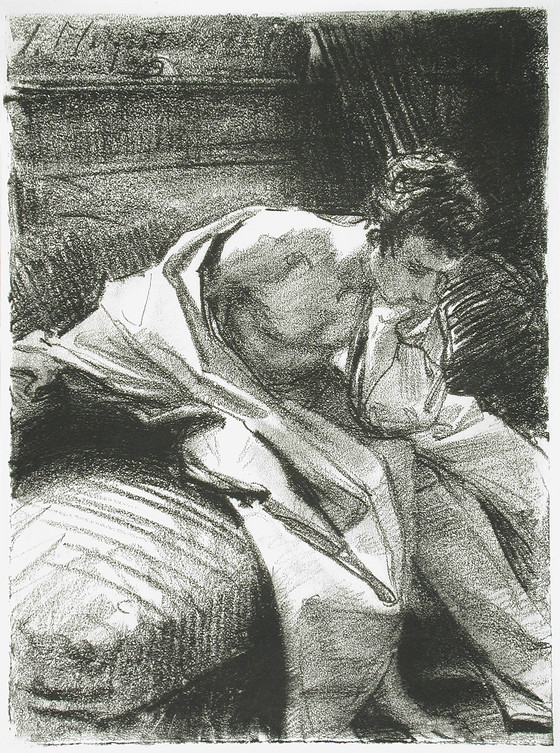After the centennial of 1876 the foremost place for American artists to show was no longer New York but Paris....
After the centennial of 1876 the foremost place for American artists to show was no longer New York but Paris. By the late nineteenth century the Paris Salon was the most important exhibition space in the Western world. Artists from many nations would submit their best works to its annual exhibition. The honor of being accepted presaged an artist’s future success. Thousands of paintings, sculptures, and works on paper were presented at each Salon; the exhibition halls were so crowded that paintings were hung to the ceiling with sculptures scattered about. To be hung “on the line” (at eye level) meant a work of art ranked among the best in the show. Since a painting might be skied (hung near the ceiling), many artists painted on a large scale to ensure that their work could be seen no matter where it was placed.
Contrary to earlier periods, American painting in the late 1800s was no longer dominated by a single aesthetic. Munich-school paintings—narrative scenes, often based on literature or history and painted in a dark palette—as well as small figure paintings in the realist tradition were popular in both France and the United States. Large portraits represent the academic style that dominated official taste during this era. Bright, sun-drenched scenes by a more progressive group of artists, the impressionists are diametrically opposite in color, mood, and concept to muted tonalist and symbolist works. Whereas the impressionists celebrated contemporary life with all its transformations, the tonalists and symbolists created hazily illuminated, dreamlike imagery.
Sculptures range from academic examples of idealized mythological imagery to expressions of the newer interest in the emotive potential of the human form. Equestrian bronzes by Frederic Remington demonstrate that at the turn of the century there was a continuing enthusiasm for heroic depictions of the West despite the increased internationalism of American taste.
More...



